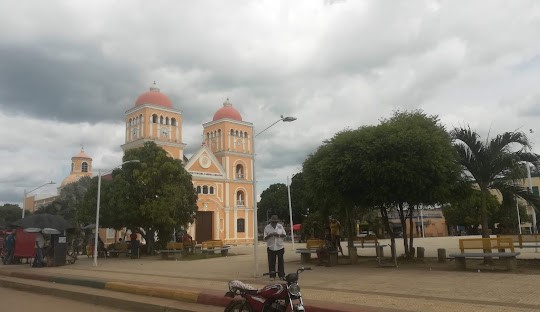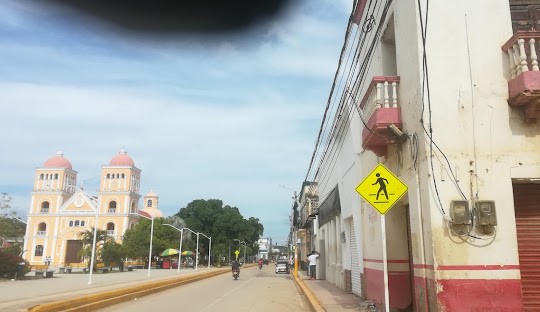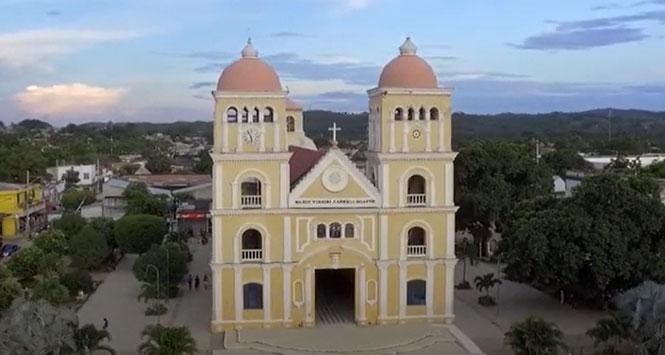CARMEN DE BOLIVAR
Department
Bolívar, Colombia

Flag of the city
The flag is made up of rectangles integrated within one another with distinctive colors such as red, yellow, and green. Also, the flag consist of a white star at the middle of these rectangles.

Seal of the city

Slogan of the city
The slogan of Carmen de Bolivar is “For the homeland”. The slogan (“Por la patria” in Spanish) reflects a sense of patriotism and a commitment to the well-being and prosperity of Carmen de Bolívar
History

The history of Carmen de Bolívar is rooted in its colonial past and the subsequent struggles and achievements that have shaped its identity. Carmen de Bolívar was founded on June 10, 1776, by Pedro Vicente Pérez. The town’s establishment is a product of the Spanish colonial era, characterized by efforts to establish settlements and exert control over the territories of present-day Colombia. During the colonial period, Carmen de Bolívar would have been influenced by the economic activities of the time, such as agriculture and mining. The town likely served as a center for trade and administration in the region. The early 19th century marked a period of significant change in Latin America, including Colombia, as nations sought independence from Spanish rule. Carmen de Bolívar, like many other towns, would have experienced the impacts of the independence movement. Throughout the 19th and early 20th centuries, Carmen de Bolívar likely saw economic development, with agriculture playing a crucial role.
Carmen de Bolívar, being a colonial-era town, inherited a rich cultural and religious heritage. Churches, colonial architecture, and cultural traditions contribute to the historical fabric of the town. The town continued to evolve in the 20th century, adapting to changing economic and social dynamics. The establishment of institutions, infrastructure development, and population growth characterized this period. Carmen de Bolívar, like many Colombian towns, faced challenges associated with the Colombian armed conflict. The town may have been affected by the conflict’s social and economic consequences, but efforts for post-conflict reconstruction and development have likely been ongoing. Efforts to preserve and celebrate the cultural heritage of Carmen de Bolívar are evident in the town’s commitment to religious traditions, festivals, and cultural events. These activities help maintain a connection to the town’s historical roots.
Geography of the city
Situated at approximately 9°43′N latitude and 75°08′W longitude, Carmen de Bolívar boasts a diverse geography across its expansive municipal area of 946.3 km². The town’s urbanized core covers 5.36 km², nestled at an elevation of 197 m (646 ft) above sea level. As of the 2018 census, Carmen de Bolívar is home to a total population of 70,131 residents, reflecting a municipal density of 74/km². Within the urban confines, the population is concentrated at a density of 9,500/km², with 50,844 residents contributing to the bustling urban landscape. The town’s geography encompasses a variety of landscapes, blending urban development with agricultural zones and possibly featuring natural elements such as rivers or hills. Its tropical climate, influenced by its equatorial proximity, is marked by distinct wet and dry seasons. This geographical mosaic defines Carmen de Bolívar, offering a backdrop of diverse terrains, urban vitality, and a population distribution that reflects both the town’s size and its dynamic character.

Population
Municipality and town – 70,131 (2018 census)
Urban – 50,844 (2018 census)
One photo representative of the city

Etymology
The term “Carmen” often has religious connotations, as it is frequently associated with the Virgin Mary of Mount Carmel, a significant figure in Catholicism. Many towns and cities across Latin America have been named “Carmen” in honor of this religious figure. The name “Bolívar” is widely associated with Simón Bolívar, a key figure in South America’s successful struggle for independence from Spanish rule in the early 19th century. Simón Bolívar is considered one of the leading military and political leaders in the history of the continent, and many places in Latin America bear his name. Therefore, it’s plausible that “Carmen de Bolívar” may have been named to honor both the religious and historical aspects, combining a religious reference with a nod to the liberator Simón Bolívar.
What the city is known or famous for

Carmen de Bolívar is renowned for its cultural and religious heritage, deeply embedded in its historical roots. The town is known for its colonial architecture, with the Church of Saint Mary Magdalene standing as a prominent symbol of its religious fervor. Residents take pride in preserving and celebrating their cultural identity through traditional festivals, music, and dance, showcasing a vibrant tapestry of indigenous, African, and Spanish influences. Additionally, Carmen de Bolívar is recognized for its commitment to agriculture, with fertile lands supporting the cultivation of crops like rice, corn, and beans. The town’s rich history and cultural traditions make it a distinctive and cherished community in the region.
